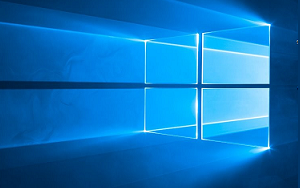Running out of space on your Android device can be frustrating. Discover practical methods to efficiently free up storage by managing apps, media, and system data. Learn how to use built-in tools and third-party apps to keep your Android running smoothly.
Efficient Ways to Free Up Storage on Android
In the digital age, our smartphones have become indispensable, serving as our communication hubs, entertainment centers, and productivity tools. However, with all this functionality comes one persistent issue: limited storage space. Android devices, in particular, can quickly fill up with apps, photos, videos, and system data, leading to performance slowdowns and constant notifications about insufficient storage. Fortunately, there are several effective methods to free up storage on your Android device, ensuring optimal performance and usability.
1. Identify Storage-Hogging Apps
Before you start deleting files, it's crucial to identify which apps are consuming the most storage. Here's how you can do that:
- Navigate to Settings on your Android device.
- Scroll down and tap on Storage.
- Select Apps to view a list of installed applications along with their storage usage.
- Identify apps that use excessive space and consider uninstalling or clearing their data.
2. Clear App Cache
Many apps store temporary data known as cache to improve performance. Over time, this cache can accumulate and take up significant space:
- Go to Settings and tap on Apps.
- Select the app you want to clear cache for.
- Tap on Storage and then Clear Cache.
Repeat this process for each app with a large cache footprint.
3. Use Google Photos for Media Backup
Photos and videos are often the main culprits when it comes to storage consumption. Google Photos offers a convenient solution:
- Download and open the Google Photos app.
- Sign in with your Google account.
- Enable Backup & Sync to automatically upload your photos and videos to the cloud.
- Once uploaded, use the Free up space option to delete backed-up photos from your device while retaining access in the cloud.
4. Manage Downloaded Files
Over time, your Downloads folder can become cluttered with files you no longer need:
- Open the Files app on your Android device.
- Navigate to the Downloads folder.
- Review the files and delete any that are unnecessary.
5. Leverage Built-in Storage Tools
Many Android devices come with built-in storage management tools that provide recommendations for freeing up space:
- Open Settings and go to Storage.
- Tap on Free up space or Storage Manager to see options for removing unused files.
- Follow the suggestions to clear app data, large files, and duplicate files.
6. Move Data to External Storage
If your device supports it, consider moving data to an SD card:
- Insert an SD card into the external storage slot.
- Go to Settings and tap on Storage.
- Select SD card and move files such as photos, videos, and music to the SD card.
7. Uninstall Unused Apps
Over time, you may accumulate apps that you no longer use:
- Open the Google Play Store.
- Tap on Menu and select My apps & games.
- Switch to the Installed tab to see all installed apps.
- Review the list and uninstall any apps you no longer need.
8. Optimize Storage with Third-Party Apps
Several third-party apps can help you manage storage more efficiently:
- Files by Google - Provides cleaning recommendations and file management tools.
- SD Maid - Offers advanced cleaning options for app data and system files.
- CCleaner - Known for its comprehensive cleaning capabilities across different file types.
9. Disable Bloatware
Carrier and manufacturer bloatware can take up space unnecessarily:
- Go to Settings and tap on Apps.
- Find the bloatware app you wish to disable.
- Tap Disable to stop the app from running and free up space.
10. Regularly Update Your Device
Ensure your Android device is running the latest software:
- Navigate to Settings and select System.
- Tap on Software Update and check for updates.
- Installing updates can improve performance and optimize storage management.
Conclusion
Maintaining ample storage space on your Android device is crucial for optimal performance and usability. By following these strategies, you can efficiently manage your storage, prevent clutter, and ensure your device runs smoothly. Regular maintenance and mindful management of apps and media will keep your Android device performing at its best.







